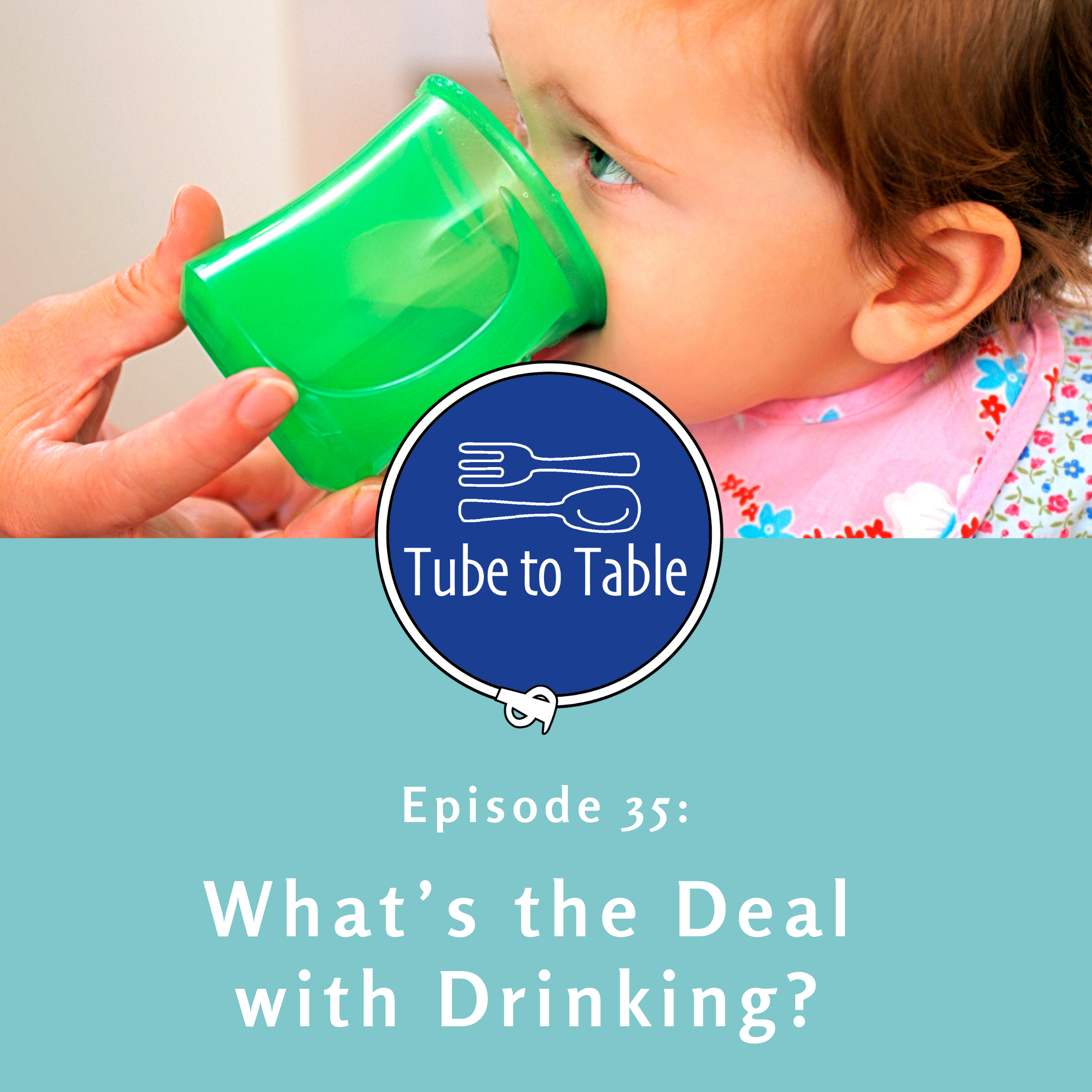Tube to Table: Episode 35: What’s the Deal with Drinking?
March 26, 2020
Posted in: Feeding, Feeding Tube Weaning, Tube To Table Podcast
We know that this past week hasn’t been easy for our families. We are thinking of you and sending a big virtual hug! It’s important to remember that what’s more important than what your kid is eating or how much they are taking by mouth is the comfort, security, and attachment they feel for you. There is a lot of evidence to show that your mental and emotional well-being are very important and can help make things easier, so hang in there! Although this might not be a time to dive into tube weaning, it could be a time to gather more information and map out a plan. At the Tube to Table podcast, we are going to continue to provide you with information and try to keep things as normal as possible for you and your family! In this week’s episode, Jennifer and Heidi are talking about learning to drink while weaning. This episode focuses on things to consider while weaning and learning to drink as well as some practical ways we see kids learn to drink!
You can download this episode from Itunes, Stitcher, Spotify, Google Play, or listen to it below:
During a wean, drinking tends to come second, but it’s important to know that when we introduce drinking, HOW it is being presented is more important than WHAT is being presented. Working on drinking is no different than working on eating when you think about the importance of getting back to the basics. You are still looking for initiation, interest, and engagement. In the past, when we have focused on these 3 foundations and went off the child’s cues, we have found that children are almost always interested in drinking or using what they say their family members use.
If a child sees their parent or sibling using a cup, they feel that it is safe. For many children who have had a negative association with drinking in the past, the trust needs to build first. To help that trust, focus on cups or utensils that they would see around the house a lot. That may be a coffee mug or a travel container, and that’s okay! These things don’t carry as much negative weight and feel safe by association because you’re showing them that if you’re doing it, it’s safe.
For many parents, there may be a certain expectation they had in mind about their child learning to drink. It might not always look like that, and that’s okay! It’s important to go off of what your child is interested in and what they are showing the most engagement with. That might be an open cup, which could be really messy So many pictures of so many odd things – the kids are enjoying the experience, at first it felt funny, but the novel and imitation is so important
You have to let go of a couple of different expectations, what you WISH or thought they might, let it all go and accept what they seem to be interested in. This might be an open cup, which could be a mess at first if they’re learning, but that’s OKAY! It won’t be perfect right away, but this gives them a positive experience while they continue to build skills and exposure. It is also important to manage your expectations for WHAT they are drinking as well. It might not always be what you “need” them to take the most of, but it is crucial that they build their positive experiences. That might mean that they are drinking a sip of your juice, a sip of decaf coffee, or chocolate milk! This allows them to have a positive experience with initiation and interest.
At Thrive, we often introduce straw drinking if possible because it is something that kids see their siblings and parents do. It is also a skill that is important in development, so it eliminates another transition from a different cup. Introducing straw drinking could start with using a pouch and having a thin puree. The pouch allows you to help a little bit by squeezing the purees. We also have used the straw valves which help make straw drinking more attainable for kids who are younger or who have immature motor skills.
If your child is having fun and showing interest, you are doing it right! Drinking might take longer than you think, and that’s okay. Keep the exposure up as long as your child is interested and engaged!

Be the first to comment